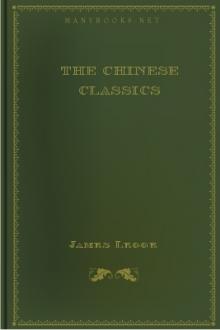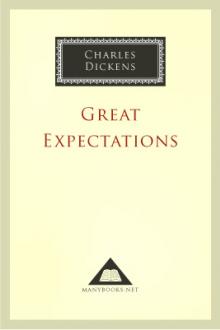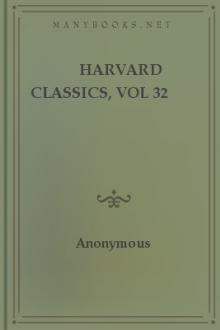The Chinese Classics (Prolegomena) by James Legge (e novels to read .txt) 📕

- Author: James Legge
- Performer: -
Book online «The Chinese Classics (Prolegomena) by James Legge (e novels to read .txt) 📕». Author James Legge
52. Yen Tsu [al. Hsiang], styled Hsiang and Tsze-hsiang (�C�� [al. ��], �r��, and �l��), a native of Lu, with his tablet following that of No. 50.
53. Chiao Tan [al. Wu], styled Tsze-kea (�p�� [al. ����], �r�l �a), a native of Lu. His place is next to that of No. 51.
54. Chu [al. Kau] Tsing-ch’iang [and simply Tsing], styled Tsze-ch’iang [al. Tsze-chieh and Tsze-mang] (�y [al. �� and �_] ���� [and simply ��], �r�l�� [al. �l�� and �l�s]), a native of Wei, following No. 52.
55. Han [al. Tsai]-fu Hei, styled Tsze-hei [al. Tsze-so and Tsze-su] (�u [al. �_] ����, �r�l�� [al. �l�� and �l��]), a native of Lu, whose tablet is next to that of No. 53.
56. Ch’in Shang, styled Tsze-p’ei [al. P’ei-tsze and Pu-tsze] (����, �r�l�A [al. �A�� and ����]), a native of Lu, or, according to Chang Hsuan, of Ch’u. He was forty years younger than Confucius. One authority, however, says he was only four years younger, and that his father and Confucius’s father were both celebrated for their strength. His tablet is the 12th, east.
57. Shin Tang, styled Chau (�����r�P). In the ‘Narratives of the School’ there is a Shin Chi, styled Tsze-chau (����, �r�l�P). The name is given by others as T’ang (�� and �l) and Tsu (��), with the designation Tsze-tsu (�l��). These are probably the same person mentioned in the Analects as Shin Ch’ang (����). Prior to the Ming dynasty they were sacrificed to as two, but in A.D. 1530, the name Tang was expunged from the sacrificial list, and only that of Ch’ang left. His tablet is the 31st, east.
58. Yen Chih-p’o, styled Tsze-shu [or simply Shu] (�C����, �r �l�� [or simply ��]), a native of Lu, who occupies the 29th place, east.
59. Yung Ch’i, styled Tsze-ch’i [al. Tsze-yen] (�a�� [or ��], �r �l�X or �l�R [al. �l�C]), a native of Lu, whose tablet is the 20th, west.
*Digitizer’s note: The actual variant used by Legge is (�����Y�k).
60. Hsien Ch’ang, styled Tsze-ch’i [al. Tsze-hung] (����, �r�l �� [al. �l��]), a native of Lu. His place is the 22nd, east.
61. Tso Zan-ying [or simply Ying], styled Hsing and Tsze-hsing (���H�r [or simply �r], �r�� and �l��), a native of Lu. His tablet follows that of No. 59.
62. Yen Chi, styled An [al. Tsze-sze] (�P�� [or ��], �r�� [al. �l ��) a native of Ch’in. His tablet is the 24th east.
63: Chang Kwo, styled Tsze-t’u (�G��, �r�l�{), a native of Lu. This is understood to be the same with the Hsieh Pang, styled Tsze-ts’ung (����, �r�l�q), of the ‘Narratives of the School.’ His tablet follows No. 61.
64. Ch’in Fei, styled Tsze-chih (���D, �r�l��), a native of Lu, having his tablet the 31st, west.
65. Shih Chih-ch’ang, styled Tsze-hang [al. ch’ang] (�I���`, �r �l�� [al. �`]), a native of Lu. His tablet is the 30th, east.
66. Yen K’wai, styled Tsze-shang (�C�D, �r�l�n), a native of Lu. His tablet is the next to that of No. 64.
67. Pu Shu-shang, styled Tsze-ch’e (�B���� [in the ‘Narratives of the School’ we have an old form of ��], �r�l��), a native of Ch’i. Sometimes for Pu (�B) we find Shao (��). His tablet is the 30th, west.
68. Yuan K’ang, styled Tsze-chi (����, �r�l�y), a native of Lu. Sze-ma Ch’ien calls him Yuan K’ang-chi, not mentioning any designation. The ‘Narratives of the School’ makes him Yuan K’ang (��), styled Chi. His tablet is the 23rd, west.
69. Yo K’o [al. Hsin], styled Tsze-shang (����, [al. �Y], �r�l�n), a native of Lu. His tablet is the 25th, east.
70. Lien Chieh, styled Yung and Tsze-yung [al. Tsze-ts’ao] (�G ��, �r�e and �l�e [al. �l��), a native of Wei, or of Ch’i. His tablet is next to that of No. 68.
71. Shu-chung Hui [al. K’wai], styled Tsze-ch’i (�����| [al. �D], �r�l��), a native of Lu, or, according to Chang Hsuan, of Tsin. He was younger than Confucius by fifty-four years. It is said that he and another youth, called K’ung Hsuan (���o), attended by turns with their pencils, and acted as amanuenses to the sage, and when Mang Wu-po expressed a doubt of their competency, Confucius declared his satisfaction with them. He follows Lien Chieh in the temples.
72. Yen Ho, styled Zan (�C��, �r�T), a native of Lu. The present copies of the ‘Narratives of the School’ do not contain his name, and in A.D. 1588 Zan was displaced from his place in the temples. His tablet, however, has been restored during the present dynasty. It is the 33rd, west.
73. Ti Hei, styled Che [al. Tsze-che and Che-chih] (�f��, �r�� [al. �l�� and ����]), a native of Wei, or of Lu. His tablet is the 26th, east.
74. Kwei [al. Pang] Sun, styled Tsze-lien [al. Tsze-yin] (�� (kui1 �������k) [al. ��] �S, �r�l�K [al. �l��]), a native of Lu. His tablet is the 27th, west.
75. K’ung Chung, styled Tsze-mieh (����, �r�l��). This was the son, it is said, of Confucius’s elder brother, the cripple Mang-p’i. His tablet is next to that of No. 73. His sacrificial title is ‘The ancient Worthy, the philosopher Mieh.’
76. Kung-hsi Yu-zu [al. Yu], styled Tsze-shang (�������p [al. ��], �r�l�W), a native of Lu. His place is the 26th, west.
77. Kung-hsi Tien, styled Tsze-shang (������ [or �I], �r�l�W [al. �l�|]), a native of Lu. His tablet is the 28th, east.
78. Ch’in Chang [al. Lao], styled Tsze-k’ai (�^�i [al. �c], �r�l �}), a native of Wei. His tablet is the 29th, west.
79. Ch’an K’ang, styled Tsze-k’ang [al. Tsze-ch’in] (����, �r�l �� [al. �l�V]), a native of Ch’an. See notes on Ana. I. x.
80. Hsien Tan [al. Tan-fu and Fang], styled Tsze-hsiang (���� [al. ���� and ��], �r�l�H), a native of Lu. Some suppose that this is the same as No. 53. The advisers of the present dynasty in such matters, however, have considered them to be different, and in
1724, a tablet was assigned to Hsien Tan, the 34th, west.
The three preceding names are given in the ‘Narratives of the School.’
The research of scholars has added about twenty others.
81. Lin Fang, styled Tsze-ch’iu (�L��, �r�l��), a native of Lu. The only thing known of him is from the Ana. III. iv. His tablet was displaced under the Ming, but has been restored by the present dynasty. It is the first, west.
82. Chu Yuan, styled Po-yu (����, �r�B��), an officer of Wei, and, as appears from the Analects and Mencius, an intimate
friend of Confucius. Still his tablet has shared the same changes as that of Lin Fang. It is now the first, east.
83 and 84. Shan Ch’ang (����) and Shan T’ang (����). See No.
57.
85. Mu P’i (����), mentioned by Mencius, VII. Pt. II. xxxvii. 4. His entrance into the temple has been under the present dynasty. His tablet is the 34th, east.
86. Tso Ch’iu-ming or Tso-ch’iu Ming (���C��) has the 32nd place, east. His title was fixed in A.D. 1530 to be ‘The Ancient Scholar,’ but in 1642 it was raised to that of ‘Ancient Worthy.’ To him we owe the most distinguished of the annotated editions of the Ch’un Ch’iu. But whether he really was a disciple of Confucius, and in personal communication with him, is much debated.
The above are the only names and surnames of those of the disciples who now share in the sacrifices to the sage. Those who wish to exhaust the subject, mention in addition, on the authority of Tso Ch’iu-ming, Chung-sun Ho-chi (���]����), a son of Mang Hsi (see p. 63), and Chung-sun Shwo (���]��), also a son of Mang Hsi, supposed by many to be the same with No. 17; Zu Pei, (���d), mentioned in the Analects, XVII. xx, and in the Li Chi, XVIII. Sect. II. ii. 22; Kung-wang Chih-ch’iu (��������) and Hsu Tien (���I), mentioned in the Li Chi, XLIII. 7; Pin-mau Chia (������), mentioned in the Li Chi, XVII. iii. 16; K’ung Hsuan (���o) and Hai Shu-lan (�f�� ��), on the authority of the ‘Narratives of the School;’ Ch’ang Chi (�`�u), mentioned by Chwang-tsze; Chu Yu (�|�y), mentioned by Yen-tsze (���l); Lien Yu (�G��) and Lu Chun (�|�m), on the authority of ��������; and finally Tsze-fu Ho (�l�A��), the Tsze-fu Ching-po (�l�A���B) of the Analects, XIV. xxxviii.
CHAPTER VI.
LIST OF THE PRINCIPAL WORKS WHICH HAVE BEEN CONSULTED IN THE PREPARATION OF THIS VOLUME.
SECTION I.
CHINESE WORKS, WITH BRIEF NOTICES.
�Q�T�g����, ‘The Thirteen Ching, with Commentary and Explanations.’ This is the great repertory of ancient lore upon the Classics. On the Analects, it contains the ‘Collection of Explanations of the Lun Yu,’ by Ho Yen and others (see p. 19), and ‘The Correct Meaning,’ or Paraphrase of Hsing Ping (see p. 20). On the Great Learning and the Doctrine of the Mean, it contains the comments and glosses of Chang Hsuan, and of K’ung Ying-ta (���o �F) of the T’ang dynasty.
�s�����I�|������, ‘A new edition of the Four Books, Punctuated and Annotated, for Reading.’ This work was published in the seventh year of Tao-kwang (1827) by a Kao Lin (���Y). It is the finest edition of the Four Books which I have seen, in point of typographical execution. It is indeed a volume for reading. It contains the ordinary ‘Collected Comments’ of Chu Hsi on the Analects, and his ‘Chapters and Sentences’ of the Great Learning and Doctrine of the Mean. The editor’s own notes are at the top and bottom of the page, in rubric.
�|�����l���q����, ‘The Proper Meaning of the Four Books as determined by Chu Hsi, Compared with, and Illustrated from, other Commentators.’ This is a most voluminous work, published in the tenth year of Ch’ien-lung, A.D. 1745, by Wang Pu-ch’ing (�� �B�C), a member of the Han-lin College. On the Great Learning and the Doctrine of the Mean, the ‘Queries’ (����) addressed to Chu Hsi and his replies are given in the same text as the standard commentary.
�|���g������, ‘The Four Books, Text and Commentary, with Proofs and Illustrations.’ The copy of this Work which I have was edited by a Wang T’ing-chi (�L����), in the third
year of Chia-ch’ing, A.D. 1798. It may be called a commentary on the commentary. The research in all matters of Geography, History, Biography, Natural History, &c., is immense.
�|���������n, ‘A Collection of the most important Comments of Scholars on the Four Books.’ By Li P’ei-lin (���K�M); published in the fifty-seventh K’ang-hsi year, A.D. 1718. This Work is about as voluminous as the ����, but on a different plan. Every chapter is preceded by a critical discussion of its general meaning, and the logical connexion of its several paragraphs. This is followed by the text, and Chu Hsi’s standard commentary. We have then a paraphrase, full and generally perspicuous. Next, there is a selection of approved comments, from a great variety of authors; and finally, the reader finds a number of critical remarks and ingenious views, differing often from the common interpretation, which are submitted for his examination.
�|���l������, ‘A Supplemental Commentary, and Literary Discussions, on the Four Books.’ By Chang Chan-t’ao [al. T’i-an] (�i ���� [al. ����]), a member of the Han-lin college, in the early part, apparently, of the reign of Ch’ien-lung. The work is on a peculiar plan. The reader is supposed to be acquainted with Chu Hsi’s commentary, which is not given; but the author generally supports his views, and defends them against the criticisms of some of the early scholars of this dynasty. His own exercitations are of the nature of essays more than of commentary. It is a book for the student who is somewhat advanced, rather than for the learner. I have often perused it with interest and advantage.
�|�������X��, ‘The Four Books, according to the Commentary, with Paraphrase.’ Published in the eighth year





Comments (0)